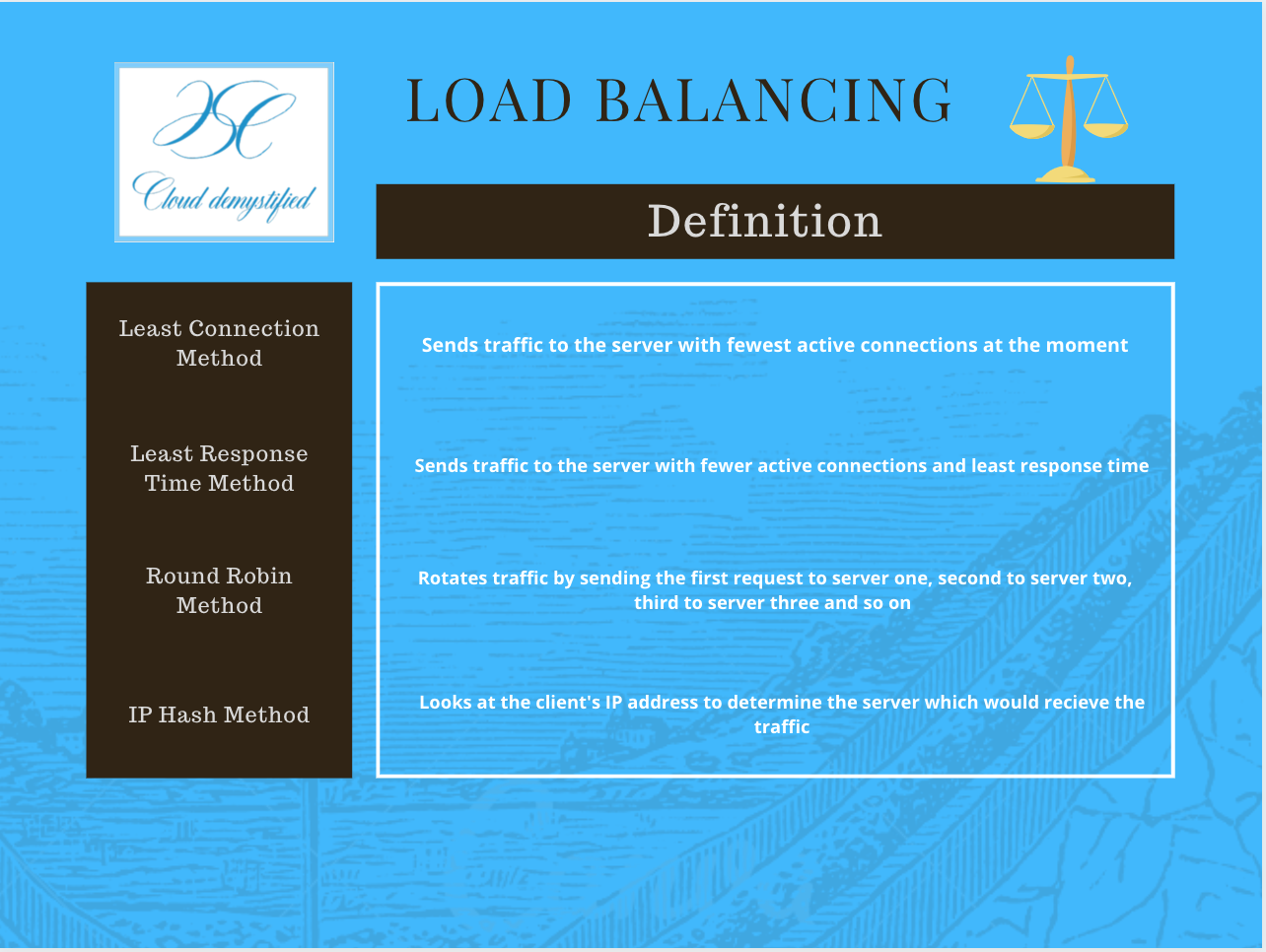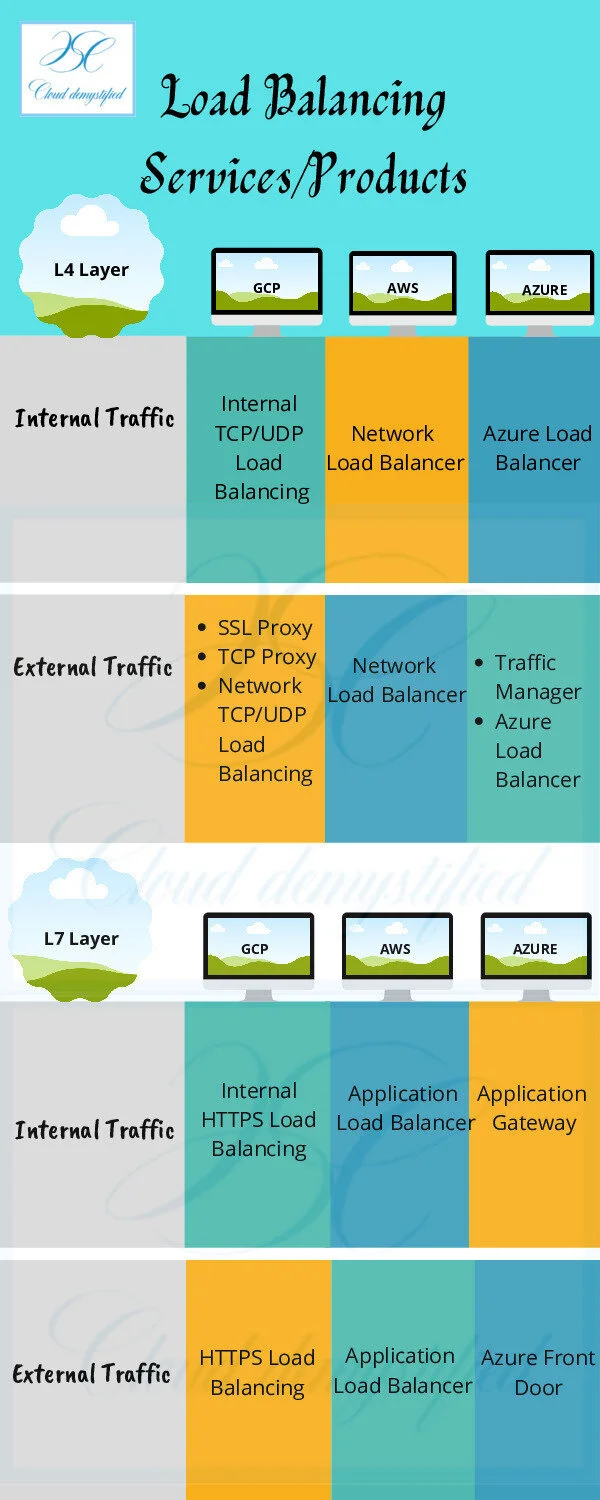Cloud Load Balancers
What is a Load Balancer? How does a Cloud Load Balancer work? What all load balancing services are provided by popular Cloud Providers (AWS, Azure and GCP)? What are L4 and L7 Load Balancers? Read on to know more……
What is a Load Balancer?
Load balancing simply means balancing network load across different servers in the Cloud to optimize service, reduce delays and improve availability. Since a Cloud is made up of many servers (Refer to ), Load Balancers make sure that any traffic (incoming or outgoing) is balanced well across the servers. This ensures high availability and low latency (or delay in response), since no particular server is under immense load at once.
How does a Load Balancer Work?
There are many load balancing methods used by load balancers, but here are some of the common algorithms, or rules used by load balance to distribute network traffic across servers:
What Type of Load Balancers are Offered by Cloud Providers?
Traffic in Cloud Providers can either be Internal or External. Based on the type of traffic, Providers customize their load balancing solutions:
Internal Load Balancing
This load balancing solution is used when clients want to balance traffic inside the Cloud.
External Load Balancing
This load balancing solution is used when clients want to balance traffic coming from the outside, especially when users want to reach applications inside the cloud from the internet
The next level of customization is on the characteristics of the traffic the Cloud Providers are dealing with. Based on the type of traffic, Providers can offer different solutions.
L4 Layer
The Load Balancer directs traffic to different servers based on data found at the network and transport layer. This simply means it looks at the Client’s IP address to make the load balancing decision.
L7 Layer
The Load Balancer directs traffic to different servers based on data found at the application layer. This simply means it looks at the Client’s HTTP characteristics, images, data inside the application to make the load balancing decision.
Traffic Public Cloud Providers (AWS, GCP and Azure) provide the following load balancing services based on the type (internal/external) and characteristics (L4/L7 layer) of the incoming traffic
Resources
Readings
GCP Load Balancing Overview- https://cloud.google.com/load-balancing/docs/load-balancing-overview
Azure Load Balancing Overview- https://docs.microsoft.com/en-us/azure/load-balancer/load-balancer-overview
AWS Load Balancing Overview- https://aws.amazon.com/elasticloadbalancing/
GCP Choosing a Load Balancer- https://cloud.google.com/load-balancing/docs/choosing-load-balancer
Azure Choosing a Load Balancer- https://docs.microsoft.com/en-us/azure/architecture/guide/technology-choices/load-balancing-overview
Elastic Load Balancing Features- https://aws.amazon.com/elasticloadbalancing/features/
Courses
GCP Load Balancing and Configuration Management in the Cloud- https://www.coursera.org/learn/configuration-management-cloud
AWS Fundamentals (Introduction to Elastic Load Balancer)- https://www.coursera.org/learn/aws-fundamentals-going-cloud-native
Azure Load Balancing and Designing a Network Implementation- https://cloudacademy.com/course/designing-an-azure-network-implementation/azure-load-balancing/




